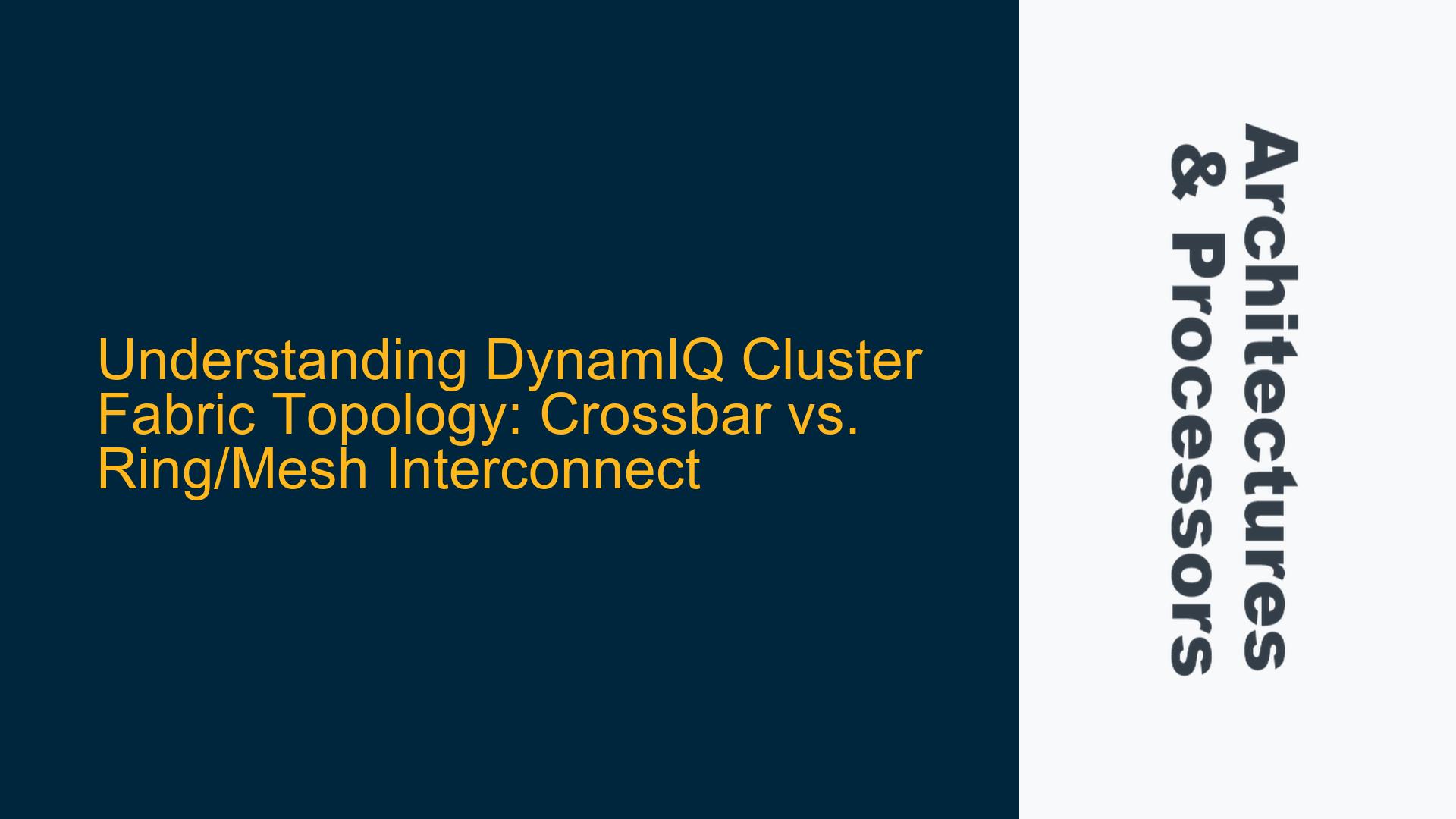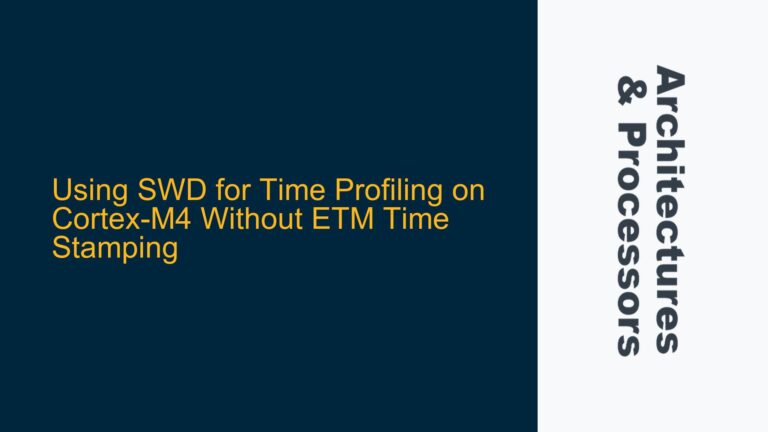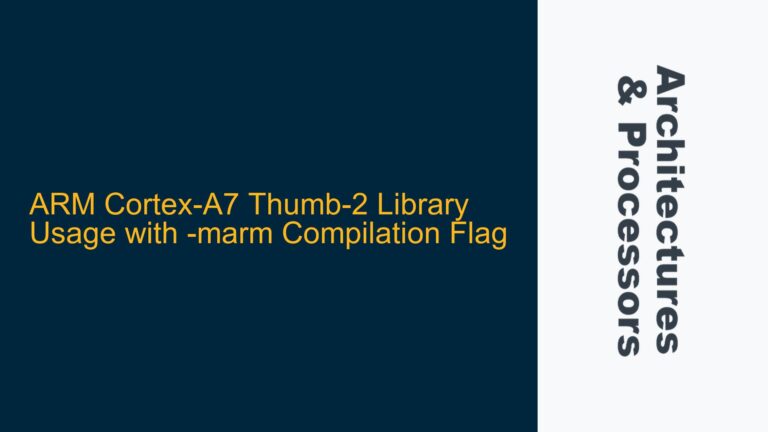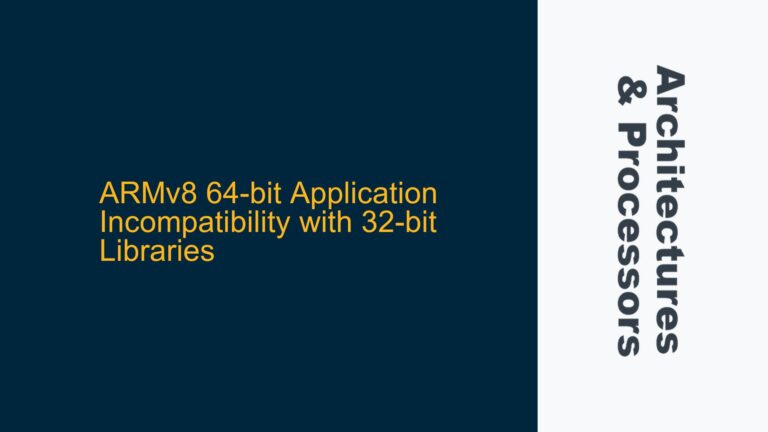ARM DynamIQ Cluster Fabric Topology Overview
The ARM DynamIQ cluster represents a significant evolution in ARM’s multi-core processor architecture, particularly in how cores communicate and share resources. At the heart of this architecture lies the fabric topology, which determines the efficiency and scalability of data transfer between cores, caches, and other system components. The fabric topology in DynamIQ clusters is designed to balance performance, power efficiency, and area utilization, making it a critical component for modern embedded systems, mobile devices, and high-performance computing applications.
The DynamIQ cluster fabric topology is not a conventional crossbar or a simple ring/mesh interconnect. Instead, it employs a hybrid approach that combines the benefits of both topologies while addressing their limitations. The fabric is optimized for low-latency communication between cores and shared resources, such as the Level 2 (L2) cache, while maintaining scalability for clusters with up to eight cores. This hybrid topology ensures that data coherence and memory access patterns are handled efficiently, even under high workloads.
The fabric topology in DynamIQ clusters is tightly integrated with ARM’s Coherent Mesh Network (CMN), which provides a scalable and coherent interconnect for multi-core systems. The CMN is responsible for managing data flow between cores, caches, and external memory controllers, ensuring that all components operate in a synchronized manner. This integration allows the DynamIQ cluster to support advanced features like dynamic power management, heterogeneous multi-processing, and real-time performance tuning.
Crossbar vs. Ring/Mesh: Trade-offs in DynamIQ Fabric Design
The choice between a crossbar, ring, or mesh interconnect in a multi-core architecture like DynamIQ involves several trade-offs. A crossbar interconnect offers high bandwidth and low latency for point-to-point communication but suffers from scalability issues as the number of cores increases. The area and power overhead of a crossbar grow quadratically with the number of cores, making it impractical for large clusters. On the other hand, a ring or mesh interconnect provides better scalability and area efficiency but can introduce higher latency for certain communication patterns.
In the DynamIQ cluster, ARM has opted for a hybrid fabric topology that combines the low-latency benefits of a crossbar with the scalability of a ring/mesh interconnect. This hybrid approach is achieved through a hierarchical design where local communication between cores and the shared L2 cache is handled by a low-latency crossbar-like structure, while global communication across the cluster is managed by a scalable ring/mesh network. This design ensures that critical data paths, such as cache coherency traffic, are optimized for performance, while less time-sensitive traffic is routed through the more scalable global interconnect.
The hybrid fabric topology also supports advanced features like Quality of Service (QoS) and bandwidth allocation, which are essential for managing the diverse workloads encountered in modern applications. For example, real-time tasks can be prioritized to ensure low-latency access to shared resources, while background tasks are allocated bandwidth in a way that minimizes interference. This level of control is critical for achieving predictable performance in heterogeneous multi-processing environments, where different types of cores (e.g., high-performance and power-efficient cores) are used together.
Optimizing Data Flow and Coherency in DynamIQ Fabric
To fully leverage the capabilities of the DynamIQ cluster fabric topology, developers must understand how data flow and coherency are managed within the system. The fabric is designed to support ARM’s AMBA 5 CHI (Coherent Hub Interface) protocol, which provides a scalable and efficient mechanism for maintaining cache coherency across multiple cores and clusters. The CHI protocol operates in conjunction with the fabric topology to ensure that all cores have a consistent view of memory, even in the presence of concurrent accesses.
One of the key challenges in optimizing data flow within the DynamIQ fabric is managing the trade-off between latency and bandwidth. The hybrid topology allows for low-latency communication within local domains (e.g., between a core and its L2 cache), but global communication across the cluster may incur higher latency due to the ring/mesh interconnect. To address this, ARM has implemented several techniques, such as adaptive routing and congestion control, which dynamically adjust the flow of data based on current traffic patterns. These techniques help to minimize latency spikes and ensure that critical data paths remain responsive under heavy load.
Another important consideration is the management of cache coherency traffic, which can become a bottleneck in multi-core systems. The DynamIQ fabric includes dedicated hardware support for cache coherency, such as snoop filters and directory-based coherence, which reduce the overhead of maintaining consistency across cores. Snoop filters track the state of cache lines and eliminate unnecessary coherence traffic, while directory-based coherence provides a scalable mechanism for tracking shared data. These features are essential for maintaining high performance in workloads with high levels of data sharing, such as multi-threaded applications and real-time systems.
In addition to hardware optimizations, software techniques can also play a role in optimizing data flow and coherency within the DynamIQ fabric. For example, developers can use memory barriers and cache maintenance operations to enforce ordering constraints and ensure that data is visible to all cores at the appropriate time. ARM provides a comprehensive set of tools and libraries, such as the ARM CCI (Cache Coherent Interconnect) and ARM DS-5 Development Studio, which can be used to profile and optimize the performance of multi-core applications.
In conclusion, the fabric topology within the ARM DynamIQ cluster is a sophisticated hybrid design that combines the best aspects of crossbar and ring/mesh interconnects. This topology is optimized for low-latency communication, scalability, and advanced features like dynamic power management and heterogeneous multi-processing. By understanding the trade-offs and techniques involved in optimizing data flow and coherency, developers can fully leverage the capabilities of the DynamIQ architecture to build high-performance and power-efficient embedded systems.






